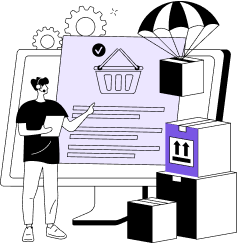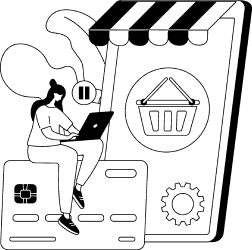- Global eCommerce App Market Size & Growth Trends
- How Much Does It Cost to Build an eCommerce App?
- Types of eCommerce Apps and Their Cost Range
- Factors That Influence the Cost of eCommerce App Development
- Feature Complexity
- Customization Level
- Third-Party Integrations
- Scalability Requirements
- Platform Choice (iOS, Android, Web)
- Security and Compliance
- Design Complexity
- Hidden Factors Affecting the Cost to Develop an eCommerce App
- 1. Maintenance and Updates
- 2. Infrastructure and Hosting
- 3. App Store Fees and Compliance
- 4. Customer Support Integration
- 5. Testing and QA Across Devices
- 6. Data Backup and Recovery Systems
- 7. Scaling and Performance Tuning
- 8. Analytics and Business Intelligence Tools
- Strategies to Optimize eCommerce App Development Costs
- 1. Prioritize Core Features (Start with an MVP)
- 2. Choose the Right Development Model
- 3. Use Open-Source Tools and Frameworks
- 4. Go Cross-Platform with Caution
- 5. Leverage Cloud Services
- 6. Automate Testing Processes
- 7. Implement Agile Development Practices
- 8. Plan for Post-Launch, Not Just Development
- Essential Features of an eCommerce App
- Customer-Side Features (User Panel)
- Admin-Side Features (Admin Panel)
- Advanced Features to Make Your eCommerce App Stand Out
- AI-Powered Personalization Engine
- AI Chatbots & Virtual Shopping Assistants
- Predictive Search & Smart Filters
- Behavior-Based Retargeting
- AI-Powered Dynamic Pricing
- AI-Driven Inventory Forecasting
- Visual Search & Image Recognition
- Voice Commerce Integration
- AR-Based Virtual Try-On
- Product Customization Tools
- Smart Invoicing & Billing Automation
- Advanced Analytics Dashboard (Admin)
- Fraud Detection System
- Gamification Elements
- One-Tap Reordering
- How to Develop an eCommerce App: Step-by-Step Process
- 1. Market Research & Competitive Analysis
- 2. Feature Planning & App Architecture
- 3. UI/UX Design
- 4. Tech Stack Finalization
- 5. Backend Development
- 6. Frontend Development
- 7. Integrations (Payment, Analytics, CRM, etc.)
- 8. Testing & Quality Assurance
- 9. App Store & Web Deployment
- 10. Post-Launch Support & Iteration
- How Do eCommerce Apps Make Money?
- 1. Direct Product Sales
- 2. Subscription Plans
- 3. In-App Advertising
- 4. Affiliate Commissions
- 5. Data Monetization
- 6. Freemium Add-ons or Microtransactions
- 7. Loyalty & Rewards Partnerships
- Why Appinventiv Is the Ideal Partner to Build Your eCommerce App
- FAQs
Key takeaways:
- eCommerce app development costs range from $30K to $250K+, depending on complexity and features.
- Apps with AI, AR/VR, and real-time sync fall on the higher end of the cost spectrum.
- Single-store, marketplace, B2B, and subscription models all have distinct pricing structures.
- Key cost factors include feature depth, platform choice, integrations, and scalability.
- Smart budgeting tactics like MVP-first, open-source tools, and cloud services can reduce costs.
- Investing in a custom app now positions brands to tap into the $8T global eCommerce opportunity by 2028.
Global eCommerce sales are expected to hit $8.09 trillion in 2028, expected to witness a rise of 6.9% in just three years (Shopify). A major driver behind this growth? The rapid rise of mobile-first, app-based shopping experiences that prioritize speed, personalization, and accessibility.
Retail is no longer about physical storefronts or even traditional websites. Consumers now prefer to browse, compare, and purchase via apps that offer curated recommendations, real-time delivery updates, and seamless payment options—all within seconds.
This behavioral shift is particularly prominent among younger demographics and emerging markets, where mobile usage far exceeds desktop. Meanwhile, legacy retailers and startups alike are embracing mobile commerce to drive retention, expand reach, and stay competitive.
As a result, eCommerce apps have evolved from being a “nice-to-have” to an essential part of any retail business strategy. From groceries and electronics to fashion and home essentials, consumers now expect brands to be present—intuitively and instantly—on their smartphones.
But before you jump into development, it’s important to understand what it actually takes to bring a high-performing eCommerce app to life—both technically and financially. Depending on your goals, complexity, and platform choices, the eCommerce app development cost typically ranges from $30,000 to $250,000 or more.
In this blog, we’ll break down how much it actually costs to build an eCommerce app in 2025. You’ll learn what factors influence that cost, what features are worth investing in, and how to reduce your budget without compromising performance.
Let’s turn your idea into the next big retail app—before someone else does.’
Global eCommerce App Market Size & Growth Trends
The eCommerce sector is experiencing significant growth in 2025, presenting a compelling opportunity for businesses to invest in eCommerce app development.
- According to a report from BCG, eCommerce is projected to account for 41% of global retail sales by 2027, up from 18% in 2017, with a compound annual growth rate (CAGR) of 9% through 2027.
- Additionally, a report from Mckinsey suggests that the global social-commerce market is expected to exceed $2 trillion by 2025, reflecting the growing trend of shopping through social media platforms.
- PwC further suggests that a significant number of consumers utilize mobile apps for shopping, with 48% reporting usage of a store or brand app during in-store shopping experiences in 2024.
- As per Statista, by 2026, the value of the U.S. online retail market is projected to exceed $1.5 trillion. Furthermore, by the end of 2025, the average revenue per user (ARPU) in the U.S. eCommerce market is expected to be approximately $4,650.
- A survey by BCG and the World Retail Congress revealed that 60% of retail innovation leaders are prioritizing investments in eCommerce, indicating a strategic shift towards digital retail solutions.
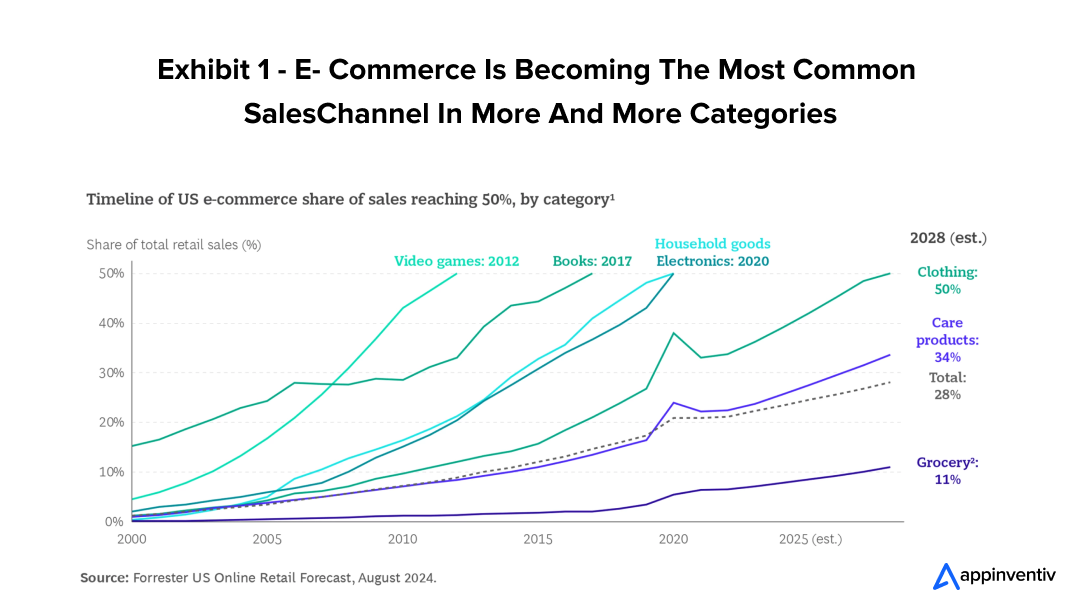
Given these eCommerce app development market insights and trends, now is an opportune moment for businesses to invest in a robust eCommerce app. The combination of increasing online retail sales, the dominance of mobile commerce, expanding digital buyer demographics, and a global shift towards digital retail solutions underscores the strategic importance of developing robust eCommerce applications.
Investing in eCommerce app development in 2025 positions businesses to capitalize on the ongoing growth of online retail, meet evolving consumer expectations, and stay competitive.
Now that we’ve explored why eCommerce apps are thriving globally, it’s time to understand what it actually takes to bring one to life—financially.
Let’s dive into a detailed breakdown of the eCommerce app development cost, including key cost drivers, development phases, and smart budgeting strategies.
How Much Does It Cost to Build an eCommerce App?
As revealed earlier, the cost to build an eCommerce app typically ranges between $30,000 to $250,000+, depending on various factors such as feature complexity, technology stack, development approach, team location, and scalability needs. A basic app with limited functionality will fall on the lower end of the spectrum, while a feature-rich, enterprise-grade platform will demand a significantly higher investment.
To arrive at a ballpark estimate for your eCommerce app development, you can use this basic formula:
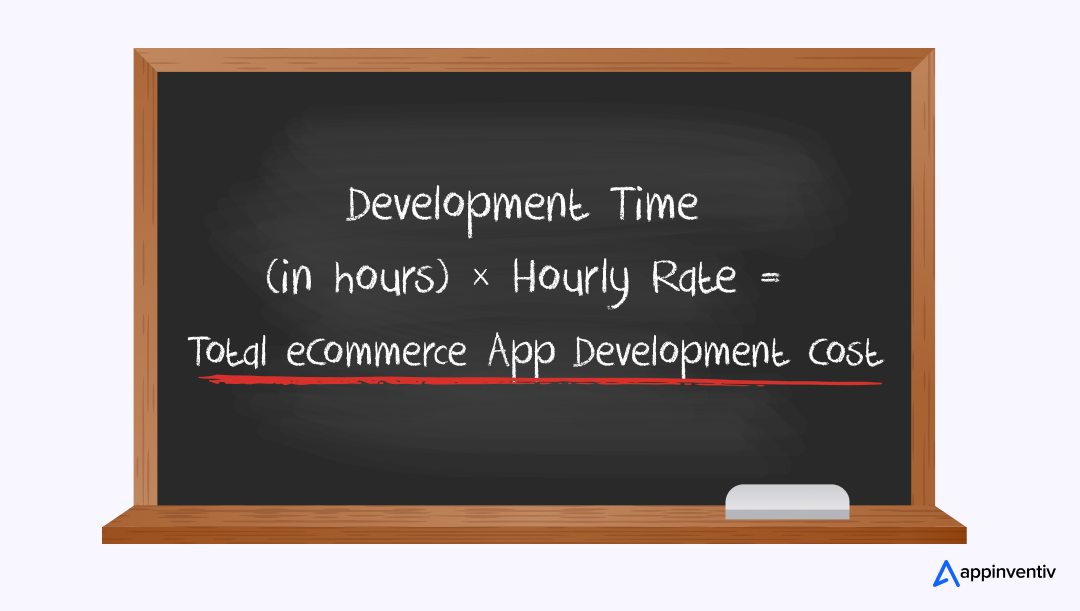
This equation helps you calculate the total eCommerce mobile application development cost by multiplying the number of hours required to build the app with the hourly rate charged by your development team.
Now, understanding how the total custom eCommerce application development cost is distributed across development phases is essential for efficient budgeting and planning. Let us offer you a quick glimpse into the rough estimates:
| Phase | Duration | Estimated Cost to Develop an eCommerce App |
|---|---|---|
| 1. Research & Discovery | 2–4 weeks | $2,000 – $10,000 |
| 2. UI/UX Design | 4–6 weeks | $5,000 – $20,000 |
| 3. Development | 8–20+ weeks | $20,000 – $150,000+ |
| 4. Testing & QA | 2–4 weeks | $5,000 – $30,000 |
| 5. Deployment | 1–2 weeks | $3,000 – $15,000 |
| 6. Maintenance & Support (Ongoing) | Monthly | $1,000 – $10,000/month |
While these phase-wise estimates provide a strong starting point, eCommerce app development costs also vary significantly depending on the type of app you’re building. Different business models, features, and user experiences require different levels of complexity and investment.
Types of eCommerce Apps and Their Cost Range
The type of eCommerce app you choose plays a major role in shaping the development cost, scope, and timeline. Below are the most common types:
- Single-Store eCommerce App
Built for businesses selling their own products through one branded storefront.
Estimated Cost: $30,000 – $80,000
- Multi-Vendor Marketplace App
Allows multiple sellers to list products and manage their own storefronts (like Amazon or Flipkart).
Estimated Cost: $80,000 – $180,000
- B2B eCommerce App
Designed for wholesale transactions, custom pricing, bulk ordering, and multi-user accounts.
Estimated Cost: $60,000 – $150,000
- Subscription-Based eCommerce App
Supports recurring billing, membership tiers, and content/product gating.
Estimated Cost: $50,000 – $130,000
- Niche or Vertical Marketplace App
Focuses on a specific category (e.g., fashion, electronics, organic goods) with curated listings and custom filters.
Estimated Cost: $40,000 – $100,000
- Social Commerce App
Integrates shopping with social features like sharing, user feeds, influencer stores, and in-app engagement.
Estimated Cost: $70,000 – $140,000
After looking into the cost variation by type of eCommerce apps, let’s now move ahead and explore the factors that influence these eCommerce mobile application development costs in more detail and how to optimize them without compromising on quality.
Factors That Influence the Cost of eCommerce App Development
While design and development form the core of app building, the final cost is shaped by a range of technical, business, and strategic factors. Understanding these factors impacting the overall cost to develop an eCommerce app can help you forecast your budget more accurately and make smarter investment decisions.
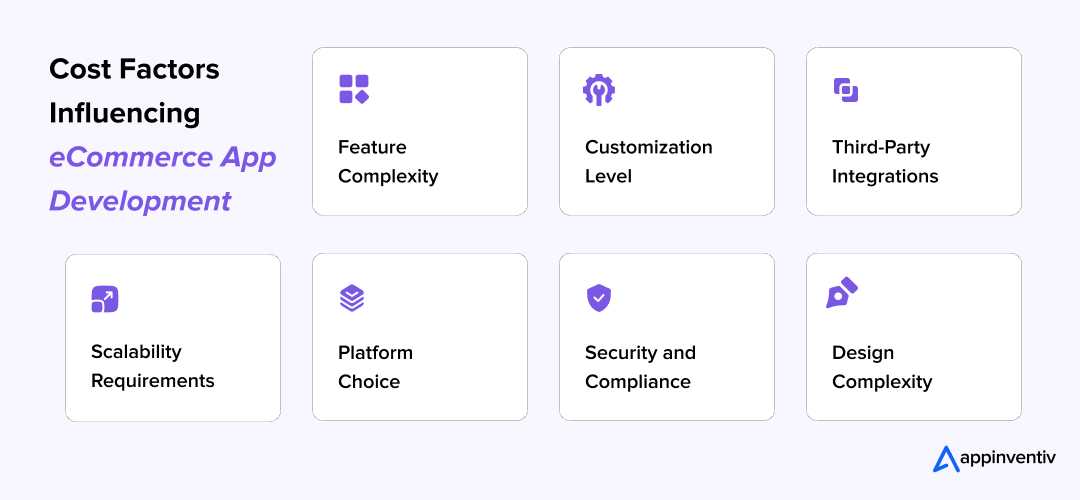
Feature Complexity
The more complex the features—like real-time inventory sync, AI-driven recommendations, multi-vendor modules, or voice search—the higher the eCommerce mobile app development cost and time. Each added layer of functionality requires more backend logic, integrations, and testing.
Let’s look into the eCommerce application development cost breakdown as per app complexity:
| Complexity Level | Key Features | Estimated Timeline | Estimated Cost |
|---|---|---|---|
| Basic | Login, product listing, cart, checkout, order history | 3–4 months | $30,000 – $50,000 |
| Moderate | Payments, reviews, basic analytics, promo codes, push notifications | 4–6 months | $50,000 – $100,000 |
| Advanced | AI features, real-time sync, multi-language, admin dashboard | 6–8 months | $100,000 – $180,000 |
| Enterprise | AR/VR, subscription models, ERP/CRM integrations, hyper-personalization | 8–12+ months | $180,000 – $250,000+ |
Customization Level
Off-the-shelf templates may reduce upfront costs, but fully custom designs and workflows built around your brand and processes significantly increase both time and budget. Tailored user experiences often demand deeper UX research and development.
[Also Read: Build vs Buy Software: How to Make the Right Choice for Your Business]
Third-Party Integrations
Integrating with CRMs, ERPs, payment gateways, logistics APIs, or analytics tools can complicate development, especially if those systems require custom middleware or workarounds to connect properly.
Scalability Requirements
If your app is expected to serve millions of users, handle high traffic, or support multiple vendors/warehouses, you’ll need more advanced architecture—such as microservices, load balancers, and cloud optimization—which raises the overall eCommerce app development costs.
Platform Choice (iOS, Android, Web)
Developing for multiple platforms increases design and coding efforts. Thus, they impact the overall eCommerce mobile app development costs. While cross-platform solutions reduce some workload, native development (iOS + Android separately) often doubles the cost and testing cycles.
Security and Compliance
Ensuring data protection (especially for transactions) as well as legal compliance in eCommerce app development and implementing security features like end-to-end encryption and fraud detection tools require extra engineering and certifications.
Design Complexity
Apps with advanced UI/UX animations, micro-interactions, multi-theme support, and accessibility standards need more design time and front-end engineering, adding to both duration and budget.
Hidden Factors Affecting the Cost to Develop an eCommerce App
Beyond the visible components like features and design, several hidden costs can quietly escalate your eCommerce app development budget. These often go unnoticed during planning but emerge as essential investments once the app goes live or scales. Recognizing them early can help you allocate resources more wisely.
1. Maintenance and Updates
Post-launch maintenance is not just about bug fixes—it includes upgrading third-party APIs, OS compatibility checks, and continuous feature improvements. These recurring updates are crucial for keeping the app secure and functional.
2. Infrastructure and Hosting
As your user base grows, so do your infrastructure needs. Costs for cloud storage, databases, CDN usage, and server scalability (especially for high-traffic shopping seasons) can add up significantly if not planned in advance.
3. App Store Fees and Compliance
Publishing your app on platforms like Apple App Store or Google Play requires annual developer fees. Additionally, adhering to app store policies or rejections due to non-compliance might demand unexpected rework and resubmission cycles.
4. Customer Support Integration
Live chat modules, AI chatbots, ticketing systems, or CRM syncs are often afterthoughts during development but become crucial for post-launch customer support. Implementing these late in the process can drive up costs.
5. Testing and QA Across Devices
Real-world testing goes beyond emulators. You’ll need to test across different screen sizes, OS versions, and device capabilities. This kind of rigorous QA (including performance and security testing) demands time and dedicated resources.
6. Data Backup and Recovery Systems
For platforms handling sensitive user and payment data, regular backups and disaster recovery solutions are a must. These require setup and monitoring tools that carry both initial and ongoing costs.
7. Scaling and Performance Tuning
Once your app sees user spikes or high transaction volumes, optimization becomes a priority. Performance tuning, caching strategies, and traffic load handling are hidden costs that arise from scaling success.
8. Analytics and Business Intelligence Tools
Basic analytics might be free, but actionable insights require deeper integrations with tools like Mixpanel, Tableau, or Google Analytics 360. Custom dashboards and data pipelines for decision-making add to backend development costs.
After looking into the factors impacting the overall development budget, let’s move ahead and understand the tips and best practices to optimize eCommerce app development cost in detail below.
Strategies to Optimize eCommerce App Development Costs
Developing a powerful eCommerce app doesn’t have to break the bank—if approached smartly. With the right strategies, businesses can significantly reduce their development costs while still delivering a high-quality product that meets user expectations and scales with demand.
Below are proven methods to help you optimize your custom eCommerce application development cost:
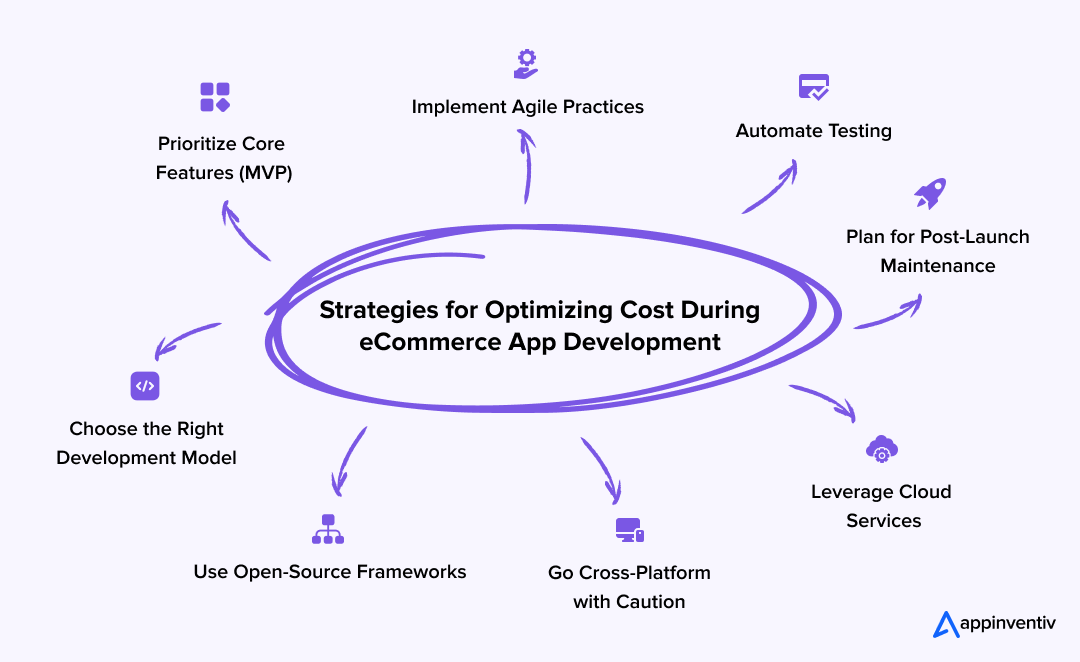
1. Prioritize Core Features (Start with an MVP)
Instead of building a fully loaded platform from day one, focus on launching a Minimum Viable Product (MVP) with only the most essential features—like user login, product browsing, cart, and checkout. This approach allows you to validate your business model and gather real user feedback before investing in advanced functionalities.
2. Choose the Right Development Model
Outsourcing to a skilled and reputable agency can offer a cost advantage over building an in-house team, especially when working with global partners. Outsourcing gives access to cross-functional talent, reduces overhead, and speeds up time to market without compromising quality.
3. Use Open-Source Tools and Frameworks
Leverage trusted open-source technologies like Magento, WooCommerce, or React Native (for cross-platform development) to save on licensing fees. These tools come with pre-built modules that reduce eCommerce app development cost and time while maintaining performance and flexibility.
4. Go Cross-Platform with Caution
If your audience is evenly split between iOS and Android, consider using cross-platform frameworks like Flutter or React Native for faster and more affordable development. However, weigh this against any performance or design trade-offs for your specific use case.
5. Leverage Cloud Services
Cloud platforms like AWS, Google Cloud, or Azure allow you to scale infrastructure on demand instead of investing upfront in expensive servers or hosting. Pay-as-you-go pricing models help manage operational costs more effectively.
6. Automate Testing Processes
Manual testing can be time-consuming and costly in the long run. Implement automated testing tools for regression, unit, and performance testing to accelerate release cycles, reduce human error, and improve quality assurance efficiency.
7. Implement Agile Development Practices
Agile development promotes incremental builds, continuous testing, and faster delivery of working features. This not only optimizes resource allocation but also ensures that the development aligns with evolving business goals—minimizing the overall cost to develop an eCommerce app.
8. Plan for Post-Launch, Not Just Development
Many businesses overlook post-launch costs—like updates, bug fixes, hosting, and scaling. By allocating a budget to handle the ongoing eCommerce app maintenance cost and performance improvements upfront, you can avoid technical debt and unplanned eCommerce app development costs down the road.
Essential Features of an eCommerce App
To create a seamless shopping experience and ensure efficient backend management, your eCommerce app should be equipped with a robust set of basic features for both customers and admins. These features implemented during the eCommerce software development process form the foundation of a functional app and are critical to handling transactions, managing products, and engaging users effectively.
Customer-Side Features (User Panel)
These features focus on improving the user journey—from product discovery to post-purchase service—and ensure a smooth, intuitive shopping experience:
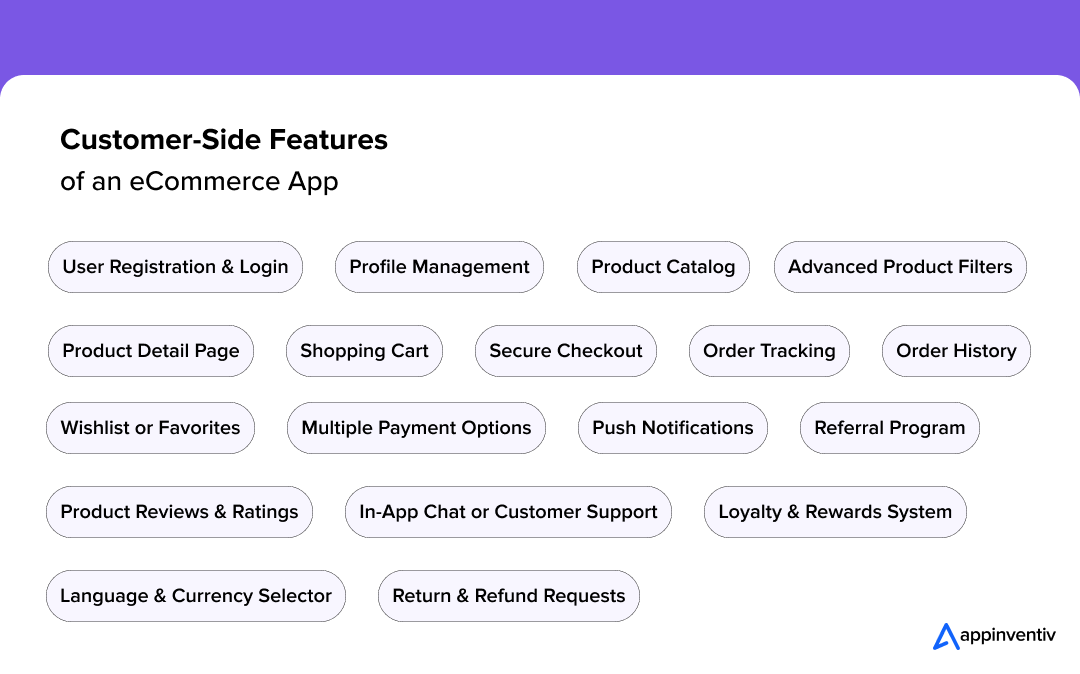
User Registration & Login
Customers can sign up and log in using email, phone number, or social accounts for quick access to the app.
Profile Management
Users can update their personal details, manage multiple delivery addresses, and view saved payment options.
Product Catalog
A browsable interface that allows users to explore product categories and subcategories intuitively.
Advanced Product Filters
Enables filtering by price, brand, availability, discounts, ratings, and more for faster discovery.
Product Detail Page
Includes product images, descriptions, specifications, pricing, and availability for informed purchasing.
Wishlist or Favorites
Users can save items they intend to buy later, improving retention and remarketing efforts.
Shopping Cart
A dedicated section to review selected items, change quantities, and proceed to checkout.
Secure Checkout
Offers a seamless and encrypted process for completing purchases using stored or new payment details.
Multiple Payment Options
Supports credit/debit cards, wallets, UPI, net banking, and cash on delivery to suit diverse user needs.
Order Tracking
Provides real-time status updates, including shipment progress and estimated delivery dates.
Order History
Users can view and reorder from their past purchases, enhancing convenience and repeat engagement.
Push Notifications
Sends alerts for new offers, order status updates, cart reminders, and personalized promotions.
Product Reviews & Ratings
Enables customers to read and submit feedback, helping others and building brand trust.
In-App Chat or Customer Support
Users can reach out for help via live chat, chatbots, or direct contact with support teams.
Return & Refund Requests
A simple interface for initiating return or refund requests and tracking their resolution.
Loyalty & Rewards System
Shows reward points earned through purchases, encouraging continued engagement with incentives.
Language & Currency Selector
Allows global users to change language and currency formats to suit their location.
Referral Program
Users can invite friends to the app and receive discounts or credits for successful referrals.
Admin-Side Features (Admin Panel)
The admin dashboard controls the operations behind the scenes—from inventory to customer service. These features are vital for managing business logic, tracking performance, and scaling operations:
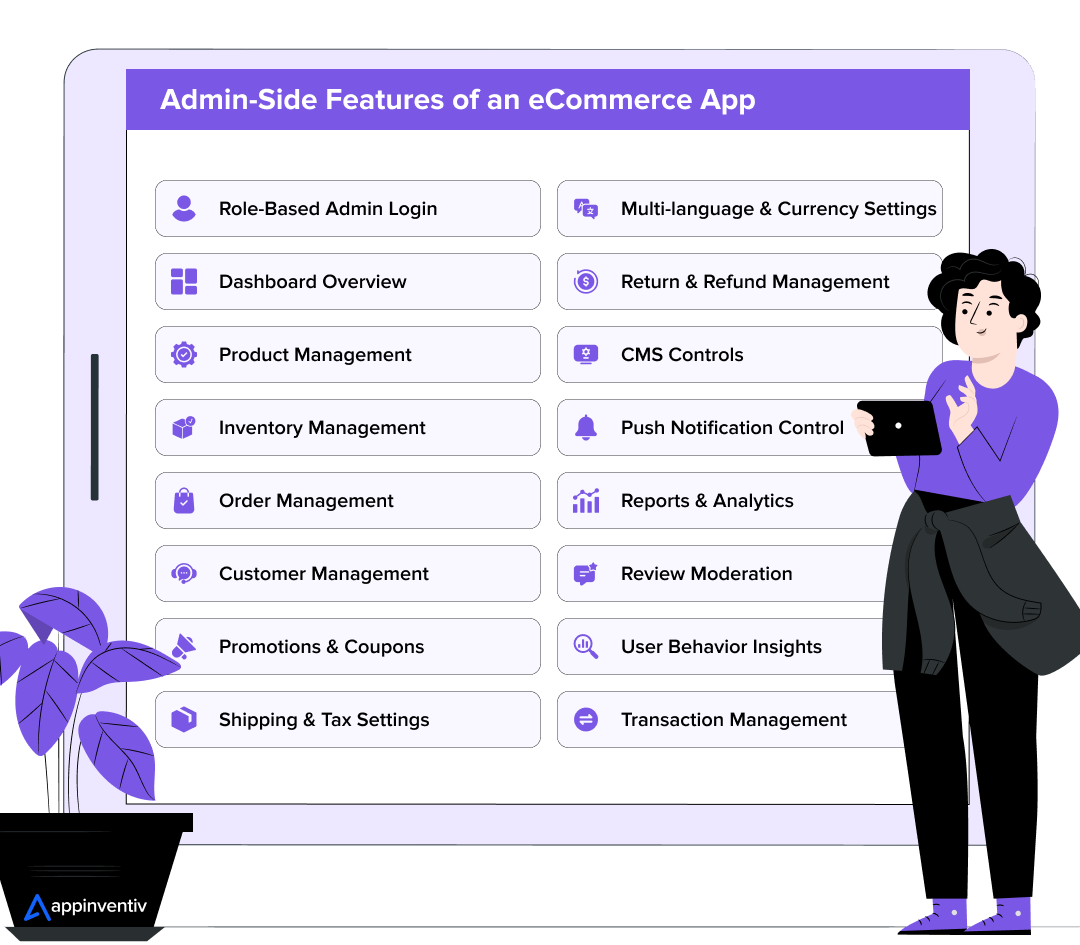
Role-Based Admin Login
Secure logins with permissions assigned by roles—like super admin, operations manager, or product editor.
Dashboard Overview
Displays real-time KPIs such as order volume, revenue, inventory status, and customer activity in one place.
Product Management
Lets admins add, edit, or delete products, manage pricing, and update descriptions or availability.
Inventory Management
Monitors stock levels in real-time and triggers alerts for low inventory or restocking requirements.
Order Management
Allows review, modification, and fulfillment of orders with access to status updates and customer requests.
Customer Management
Admins can view customer profiles, manage queries, and track individual buying behavior.
Promotions & Coupons
Enables the setup of time-bound discounts, flash deals, and coupon codes to boost conversions.
Shipping & Tax Settings
Allows customization of shipping methods, zones, and taxation rules for different regions.
CMS Controls
Manages static content like banners, blogs, terms & policies, and other non-product pages.
Push Notification Control
Sends targeted messages, promotional alerts, and updates to selected user groups.
Reports & Analytics
Offers downloadable or visual reports on sales trends, peak traffic hours, top products, and customer activity.
Review Moderation
Admins can approve, delete, or respond to user-generated product reviews.
Return & Refund Management
Facilitates smooth tracking and processing of return requests and issuing of refunds.
User Behavior Insights
Tracks how users navigate the app, where they drop off, and what actions they take most frequently.
Transaction Management
Views all transactions, tracks failed payments, and resolves billing disputes or errors.
Multi-language & Currency Settings
Supports localization of app content and pricing for multi-region accessibility and compliance.
Advanced Features to Make Your eCommerce App Stand Out
While basic functionality of an eCommerce app covers the essentials, advanced features help your app deliver personalization, automation, and intelligence—giving you a competitive edge in a crowded market. Businesses must understand that the overall eCommerce app development costs can vary with the integration of advanced features.
Below is a breakdown of powerful, forward-thinking features you can consider for your eCommerce app:
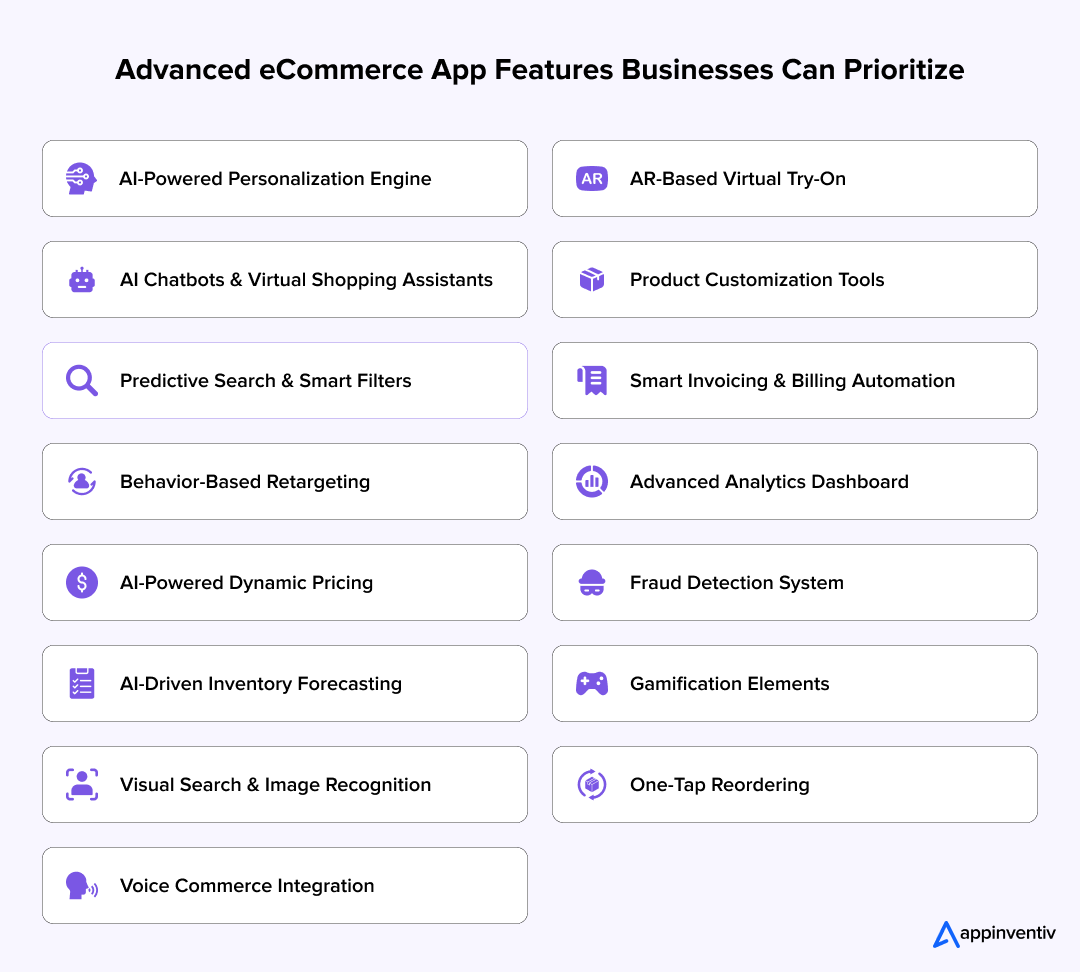
AI-Powered Personalization Engine
Leverages machine learning to recommend products based on a user’s browsing history, purchase behavior, location, and preferences—dramatically improving engagement and conversions.
AI Chatbots & Virtual Shopping Assistants
Smart chatbots can guide users through product discovery, offer personalized recommendations, answer FAQs, and handle returns—reducing support workload and improving service speed.
Predictive Search & Smart Filters
AI-enhanced search understands typos, synonyms, and intent to return more relevant results, while dynamic filters adjust based on product availability and user behavior.
Behavior-Based Retargeting
Uses AI to track real-time user actions and push personalized notifications or email campaigns with abandoned cart items, price drops, or back-in-stock alerts.
AI-Powered Dynamic Pricing
AI in eCommerce apps automatically adjusts product pricing in real-time based on demand, competitor pricing, stock levels, or user segments to maximize profit and conversions.
AI-Driven Inventory Forecasting
Helps admins predict future stock requirements based on historical trends, buying patterns, and seasonal demand—reducing overstock and stockouts.
[Also Read: 10 Ways AI in Inventory Management is Revolutionizing the Industry]
Visual Search & Image Recognition
Users can upload a photo or screenshot of a product, and AI matches it with similar or exact items from the store catalog.
Voice Commerce Integration
Integrates voice assistants (e.g., Google Assistant, Alexa) to enable product search, order tracking, and reordering via voice commands.
AR-Based Virtual Try-On
Allows users to virtually try on fashion items, eyewear, cosmetics, or home decor using augmented reality to reduce return rates and boost buying confidence.
Product Customization Tools
Interactive UI powered by AI that lets users personalize items—such as names on merchandise or choosing configurations—while showing real-time price updates.
Smart Invoicing & Billing Automation
Automatically generates and sends invoices, applies discounts or taxes, and syncs with accounting software for a smooth post-purchase experience.
Advanced Analytics Dashboard (Admin)
AI dashboards offer insights on customer lifetime value, churn probability, cart abandonment patterns, and product affinity—helping teams make data-driven decisions.
[Also Read: AI Analytics for Businesses – Benefits, Use Cases, and Real Examples]
Fraud Detection System
Uses AI models to detect suspicious transactions, unusual purchase behavior, and possible payment frauds—protecting both customers and business reputation.
Gamification Elements
Integrates game mechanics like spin-the-wheel, scratch cards, loyalty milestones, and streak-based rewards to boost engagement and user retention.
One-Tap Reordering
AI identifies frequently purchased items and offers one-tap repeat ordering, improving convenience for high-frequency buyers.
Now that you’ve seen the key factors that impact the eCommerce app development costs and the features—both essential and advanced—it’s time to bring them to life through a structured development process.
Let’s walk through the complete journey of building a successful eCommerce app from scratch.
How to Develop an eCommerce App: Step-by-Step Process
Developing an eCommerce app requires careful planning, cross-functional collaboration, and ongoing optimization. Below are the key stages to guide your development roadmap:
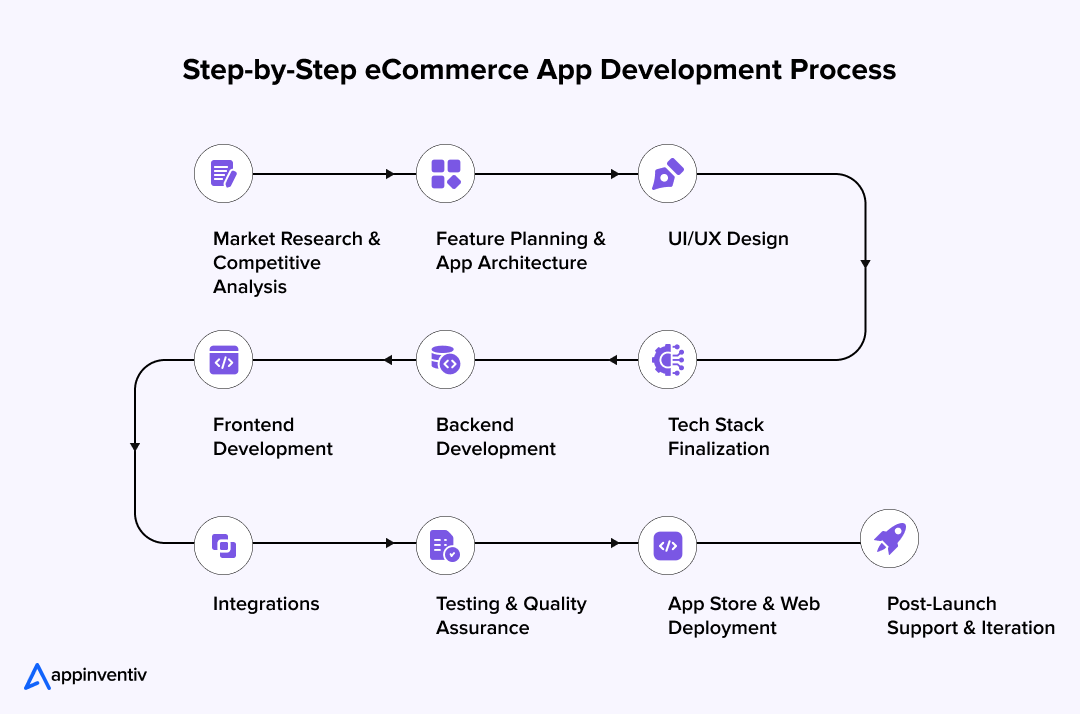
1. Market Research & Competitive Analysis
Start with detailed research on your target audience, competitors, and industry trends. Identify feature gaps in existing apps and define what makes your solution unique.
2. Feature Planning & App Architecture
Outline a feature roadmap and choose between MVP or full-featured launch. Create a scalable architecture that supports future enhancements without needing major rework.
3. UI/UX Design
Design intuitive user flows for both customer and admin sides. Focus on mobile-first responsiveness, accessibility, and conversion-optimized layouts.
4. Tech Stack Finalization
Choose appropriate frontend (e.g., React Native, Flutter), backend (Node.js, Django), and cloud infrastructure (AWS, Azure) based on your scalability and budget needs.
5. Backend Development
Set up databases, admin panels, APIs, product management systems, user roles, payment processing, and integration with third-party tools.
6. Frontend Development
Build the customer-facing app experience, ensuring smooth navigation, fast loading times, and dynamic content rendering across devices and screen sizes.
7. Integrations (Payment, Analytics, CRM, etc.)
Add necessary tools like payment gateways (Stripe, Razorpay), analytics platforms (GA4, Mixpanel), and marketing CRMs (HubSpot, MoEngage).
8. Testing & Quality Assurance
Conduct manual and automated testing for functionality, performance, security, and device compatibility. Fix bugs and optimize for smoother performance.
9. App Store & Web Deployment
Publish the app to Android and iOS app stores with proper metadata and assets. For web versions, ensure fast CDN-based hosting with SEO best practices.
10. Post-Launch Support & Iteration
Monitor user feedback, track usage metrics, and roll out continuous updates, bug fixes, and feature enhancements based on real-world performance.
With the eCommerce app development process now complete, the next step is turning user engagement into real revenue. Let’s look at how to monetize your eCommerce app effectively.
Let’s talk strategy, features, and scale.
How Do eCommerce Apps Make Money?
Monetization isn’t just about sales—it’s about building a sustainable revenue engine. eCommerce apps today use a mix of direct sales and strategic revenue models to maximize returns. Here are the most effective ones:
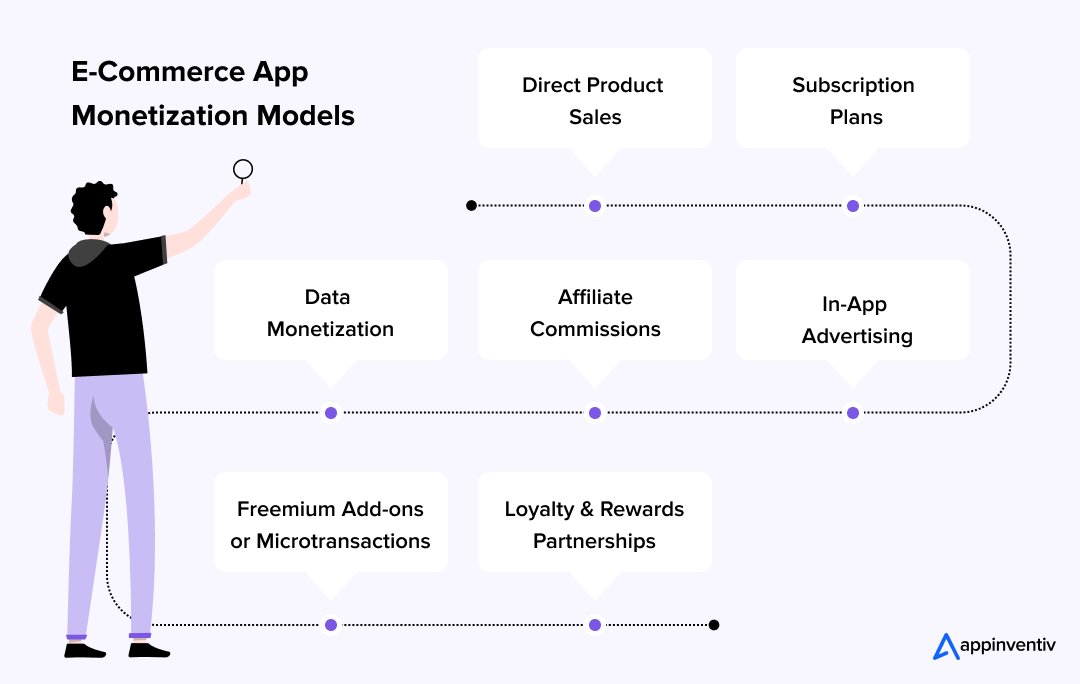
1. Direct Product Sales
This is the core revenue model where users buy physical or digital goods through the app. Seamless checkout, upselling, and high AOV (Average Order Value) drive profitability.
2. Subscription Plans
Offer premium tiers like free delivery, exclusive discounts, or early access to new products. This model boosts loyalty while generating recurring revenue.
3. In-App Advertising
Use banners, native ads, or sponsored product placements within the app. Ideal for marketplaces or apps with high daily active user counts.
4. Affiliate Commissions
Earn a percentage by showcasing and linking to third-party brands or products. Useful if you operate as a discovery platform.
5. Data Monetization
With proper privacy compliance, anonymized behavioral insights can be shared with partners or used to optimize internal marketing and inventory strategies.
6. Freemium Add-ons or Microtransactions
Charge users for optional services like gift wrapping, extended warranties, faster shipping, or premium packaging.
7. Loyalty & Rewards Partnerships
Monetize through partnerships where brands offer loyalty benefits, co-branded offers, or cross-promotions via your app ecosystem.
Why Appinventiv Is the Ideal Partner to Build Your eCommerce App
We hope this blog has helped you comprehend the eCommerce app development cost dynamics, development process, and monetization strategies. But knowing the how is only part of the journey—choosing the right technology partner can make all the difference between an average app and a market-winning product.
That’s where Appinventiv comes in.
With a proven track record of building scalable, feature-rich, and user-first eCommerce apps, Appinventiv has empowered startups, enterprises, and global brands to redefine their digital retail presence. Our eCommerce app development services are designed to not just meet industry standards—but to set them.
Here’s why businesses around the world trust us:
Full-Spectrum Expertise
From concept to code to scaling, we handle every stage of eCommerce app development—UI/UX, architecture, DevOps, QA, analytics, and beyond.
Next-Gen Feature Implementation
Whether it’s AI-powered product recommendations, AR try-ons, or dynamic pricing engines, we specialize in integrating cutting-edge innovations that delight users and drive conversions.
Custom-Tailored Solutions
No templates, no shortcuts. Every app we build is tailored to your brand DNA, business goals, and future scalability.
Global Success Stories
From helping Adidas become the first point-of-sale for sports merchandise to launching Edamama, a parenting-focused eCommerce platform that raised $5M+ in funding, our apps deliver real results.
Award-Winning Delivery
Recognized by Clutch, GoodFirms, and Statitsa, our work has consistently ranked among the best for user experience, innovation, and performance.
Post-Launch Growth Support
We don’t just deliver the app—we help you grow it with continuous optimization, user feedback analysis, and data-driven improvements.
Get in touch with us to transform your eCommerce vision into a high-performing app that scales, sells, and stands out. Your market is waiting—let’s build something that dominates it.
FAQs
Q. How long does it take for eCommerce app development?
A. The time required to build an eCommerce app depends on the scope and complexity of features, design customization, and expertise of the eCommerce app developers. On average, the development timeline can range from 4 to 12 months.
- Basic apps: 3–4 months (catalog, cart, basic checkout)
- Moderate apps: 5–6 months (payment gateway, user reviews, admin panel)
- Advanced apps: 7–9 months (AI features, multilingual support, real-time tracking)
- Enterprise-grade apps: 9–12+ months (AR/VR, dynamic pricing, ERP/CRM integration)
Q. What factors affect the cost of eCommerce app development?
A. Several key factors directly influence the cost of developing an eCommerce app including:
- Number of platforms (iOS, Android, Web)
- Level of UI/UX customization
- Complexity of features (e.g., AI, AR, subscription management)
- Third-party integrations (payment gateways, CRMs, logistics APIs)
- Security and compliance protocols
- Scalability infrastructure (cloud, microservices)
- Post-launch support and upgrades
Q. How can secure payment gateways be integrated during eCommerce app development to enable multi-currency transactions?
A. Integrating secure and global-ready payment gateways ensures smooth and trustworthy checkout experiences for users worldwide. Here’s how eCommerce app developers can carry it out smoothly:
- Choose global gateway providers like Stripe, PayPal, Adyen, or Razorpay that support multi-currency and regional tax handling.
- Implement tokenization and encryption for PCI-DSS compliance.
- Enable dynamic currency conversion based on user IP or profile settings.
- Use fraud detection tools for monitoring unusual transactions and chargebacks.
- Test extensively with sandbox environments for multiple currencies and regions.
Q. How much does it cost to develop an eCommerce app?
A. The eCommerce app development costs can range from $30,000 to $250,000+, depending on the app’s complexity, platform support, feature set, and scalability requirements. A basic MVP with limited features may fall on the lower end, while an enterprise-grade solution with AI personalization, AR/VR, multi-currency checkout, and deep system integrations will push the cost higher. Choosing the right development partner and prioritizing features strategically can help you stay within budget without compromising on quality or growth potential.


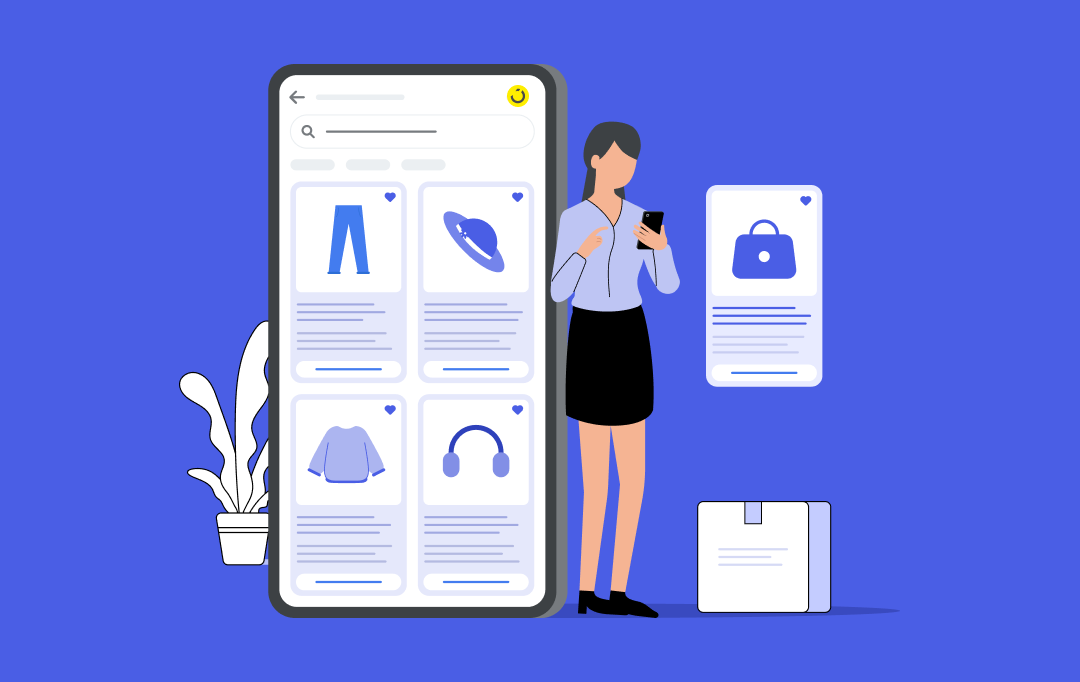
How Much Does It Cost to Build an E-commerce App Like Noon?
Key takeaways: Noon’s success highlights the rising demand for mobile-first eCommerce in the UAE. Building a similar app can cost anywhere between $ 30,000 and $200,000+, depending on the scope. The blog covers all key user and admin features needed to build a Noon-like app. Identify key cost drivers, including feature complexity, scalability, platform, and…
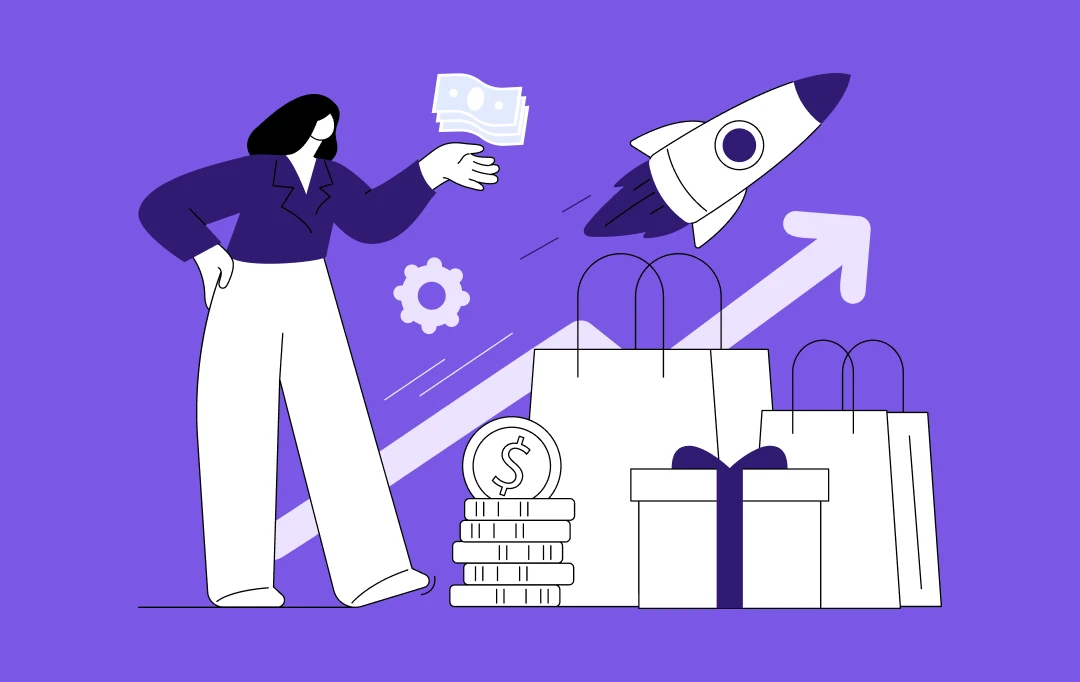
How to Build a Quick Commerce App? Features, Process, Costs
Key Takeaways Quick commerce is a rapidly growing market driven by consumer demand for ultra-fast delivery and seamless convenience, projected to reach 900 million users by 2029. Quick commerce app development costs vary widely based on features and scale, ranging from $40,000 for an MVP to $400,000+ for a fully featured app. Core features, such…

Top 20 Lucrative eCommerce Business Ideas to Start in 2025
Ryan Barr, the owner of WP Standard, wakes up each morning to the sounds of online sales notifications. From the humble beginnings of crafting leather guitar cases, his morning routine now celebrates the thriving expansion of WP Standard into a seven-figure e-commerce empire. Let’s look back to the beginning Ryan started WP Standard with just…







